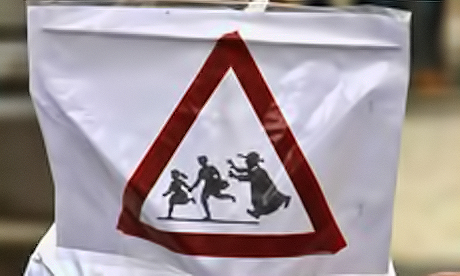The study by the John Jay College of Criminal Justice of the City University of New York, which concluded there was no single cause or predictor of sexual abuse by Catholic clergy, is not likely to put to rest questions about the cases of sexual abuse by priests and the cover-up by bishops.
Some victims claim the report is a whitewash and further evidence of an institutional coverup.
“Predictably and conveniently, the bishops have funded a report that tells them precisely what they want to hear: it was all unforeseeable, long ago, wasn’t that bad and wasn’t their fault,” said David Clohessy, executive director of the Survivors Network of those Abused by Priests (SNAP).
“America’s bishops hope this will be their ‘Mission Accomplished’ moment, like George W. Bush on the aircraft carrier prematurely and conveniently declaring victory in Iraq. Their plan is to act as though the crisis has been clarified and is now past. It’s deceptive and disingenuous, but shrewd public relations.”
He said the study was based on self-reporting by bishops who are “far more reluctant to report recent crimes by young priests who still face prosecution and litigation versus older priests for whom the criminal and civil statute of limitations has expired.”
“The reason this crisis is happening in the Church is because the criminals are hidden and coddled and promoted rather than ousted as in other institutions,” Clohessy said.
David Finkelhor, director of the Crimes Against Children Research Center at the University of New Hampshire, said he found much of value in the report. Mr. Finkelhor said there was a parallel spike in society in general of sexual abuse of minors in the 1960s and ’70s. But he said it might simply be evidence that sexual abuse began to be more widely reported in those years.
“We did see that,” he said, “but we said these are cases that have always existed, and we are just hearing about them at the time.”
Report defended
Spokesperson for John Jay College of Criminal Justice, and the report’s principal investigator Karen Terry defended the report, saying the report was published after interviews with hundreds of priests and a separate evaluation of larger societal trends including divorce rates, illegal drug use, crime, and premarital sex shaped the researchers’ conclusions.
She cautioned that the causes of abuse are complex and can’t be linked to a single factor. It wasn’t simply that social mores were changing in that era, she said, but that priests had not received instruction in human sexuality and emotional relationships. And episodes of abuse, Terry said, often happened among priests who felt isolated and under stress.
“What’s important is this convergence of factors,” Terry said.
“What is clear to us was that in many cases the bishops did respond, but they were responding to their priests,” Ms. Terry said. “They were looking to help the priest, to treat the priest, to help him overcome his sickness. What they did not do was focus on the victims and the harm to the victims.”
Sources
Additional reading
- Catholic child abuse analysed
- Authors defend report on clergy abuse
- Bishops' child protection officer looks to church's next step on abuse
- On sex abuse, the buck stops with the bishops
- Critics say new study misses real reasons for priest abuse crisis
- Questions raised by the Catholic clergy abuse report
- Priests, abuse and the meltdown of a culture
News category: World.




